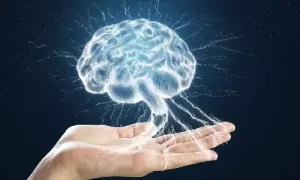
One in 10 persons in the general population is estimated to have some form of CKD; about 175,000 new people have kidney failure (stage V CKD) every year in India, writes Dr. Vijay Kher, Chairman, Nephrology and Renal Transplant Medicine, Fortis Escorts Kidney & Urology Institute, Fortis Escorts Hospital, New Delhi.
Chronic kidney disease (CKD) is a disorder, where there is a progressive deterioration in kidney function. Each kidney has 1 million filtering units called glomeruli whose function determines kidney function, measured by what is called glomerular filtration rate(GFR) which is about 100 ml/minExact incidence of CKD in India is not known. One in 10 persons in the general population is estimated to have some form of CKD. About 175,000 new people have kidney failure (Stage V CKD) every year in India, requiring dialysis &/ or kidney transplantation.
CKD has 5 stages:
- Stage I Kidney damage with normal filtration > 90% (GFR > 90 ml/min)
- Stage II Kidney damage with 60-90 % of filtration
- Stage III Kidney damage with 30-59% filtration
- Stage IV Kidney damage with 15-29 % filtration
- Stage V Kidney failure damage with (15 % filtration)
One requires dialysis or kidney transplantation in stage V (stage of kidney failure). Another important component of CKD is abnormal albumin or protein excretion in urine through all the stages of CKD. Higher the amounts of albuminuria in urine with lower GFR, in patients high chances of progressive kidney failure.
Common signs & symptoms of CKD are:
- Swelling over feet & face
- High blood pressure
- Anemia
- Bone pains/aches
- Weakness, lethargy etc.
- Protein in urine
- Blood or red blood cells in urine
- There may be subtle or no symptoms till the patient has advanced kidney failure thus regular check-ups especially in those with family history of kidney disease is essential.
The commonest causes of CKD include:
- Uncontrolled long standing diabetes mellitus
- Uncontrolled hypertension
- Glomerulonephritis (inflammation of glomeruli (filtering units)
- Kidney stones
- Urine infections
- Drugs and toxins
- Congenital genetic disorders
Diabetes and hypertension account for about 60-70% of chronic kidney disease. It usually takes 10-15 years for diabetes and hypertension to cause chronic kidney disease, thus a good opportunity to prevent the development of CKD in these diseases.
People at high risk of CKD are:
- Age above 50 years
- Diabetes mellitus
- Hypertension
- Family history of kidney disease
- Those who smoke
If you are in the above category you must come for a check up.
- Monitor blood pressure and keep it below 140/90 mmHg if no albumin in the urine & 130/80 mmHg if albumin is present in the urine.
- Check urine for albumin by doing spot urine albumin to creatinine ratio.(Albumin in urine is a marker of kidney disease).
- If you are a diabetic especially with family history of diabetic kidney disease or high blood pressure then you are at very high risk of developing CKD due to diabetes. Check control of diabetes by monitoring HbA1c every 3 months and target it to less than 7 %.Keep blood pressure < 130/80 mmHg and look for microalbuminin the urine. Microalbumin is an early sign of kidney disease in diabetes or hypertension. The monitoring must start 5 years after onset of type I diabetes and at the time of diagnosis in type II diabetes.
If one monitors and keeps HbA1c to less than 7 %, B.P. < 130/80 mmHg and monitor for microalbumin every 3-6 months and use specific drugs to control B.P. & microalbuminuria, one should be able to prevent or delay the development of CKD.
As CKD is a progressive disorder, we may not always be able to stop progression, however often it is possible to slow down the rate of deterioration so as to delay the need for dialysis or transplantation which occurs in the stage V of CKD. Dialysis & transplantation are expensive methods of treatment for CKD V or kidney failure and Govt. does not pay for these treatments,as happens in the developed world where Govt. pays for the treatment. Thus all the more reasons to emphasize on preventive aspects,as dialysis and transplantation cannot be afforded by the vast majority of CKD population in India.
Kidney transplantation is the best treatment for kidney failure. We do about 7500-8000 kidney transplants every year in India. Most of these are living donor transplants. The success rate of living donor transplant is good with 1 year survival of > 95 % and 5 yrs survival of > 90 %. Successful kidney transplantation provides an opportunity to CKD patients for a good quality of life, near normal activities and longer life span at a lower cost price in comparison to dialysis.

Dialysis is of two types:
- Blood dialysis (Hemodialysis) usually done at a centre. Should be done three times a week. Most CKD patients do twice a week dialysis (8 hrs / week) in India which is inadequate dialysis and leads to malnutrition, inflammation, poor health and higher death rates.
- Peritoneal dialysis: CAPD where 2 liters of fluid is put in the abdomen through a permanent catheter 4 times in a day. This dialysis is done by the patient or their relatives at home 4 times every day of the week.
Outcomes on hemodialysis or peritoneal dialysis are equal but inferior to that of kidney transplant. The choice of which dialysis is better depends on patient’s characteristics and individualization of therapy for each patient should be done. Making appropriate selection of modality is key to success of each patient.






